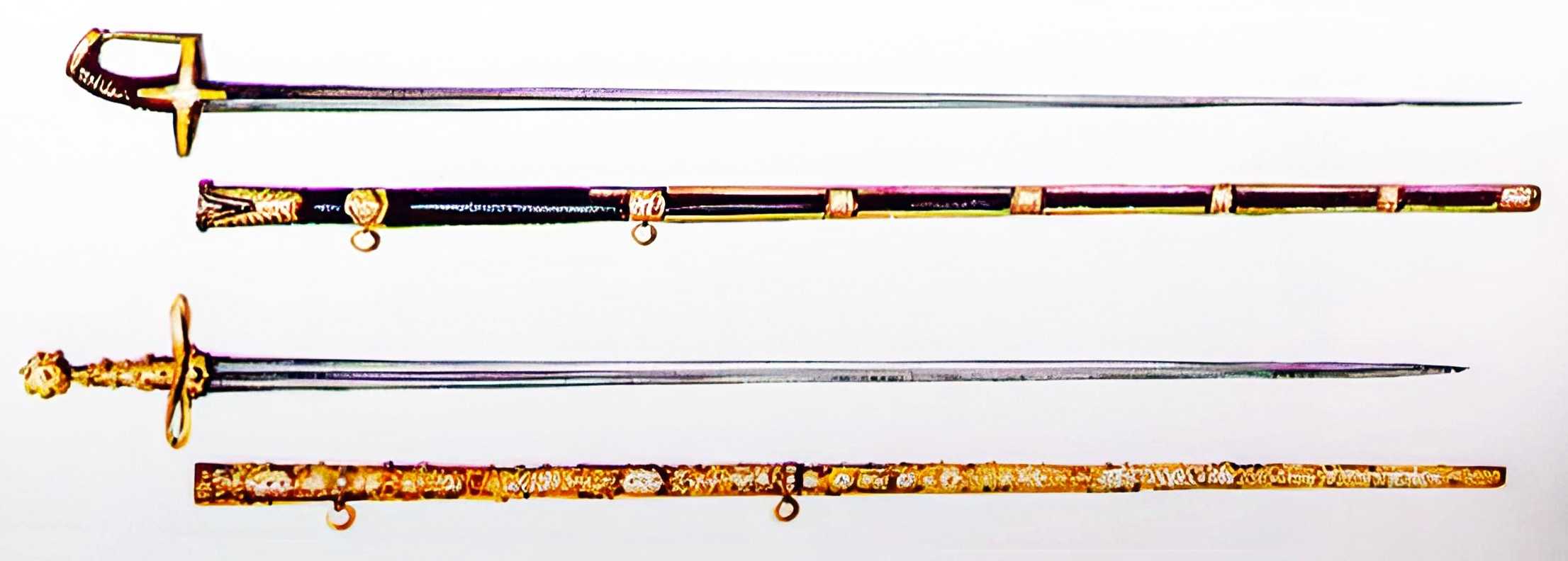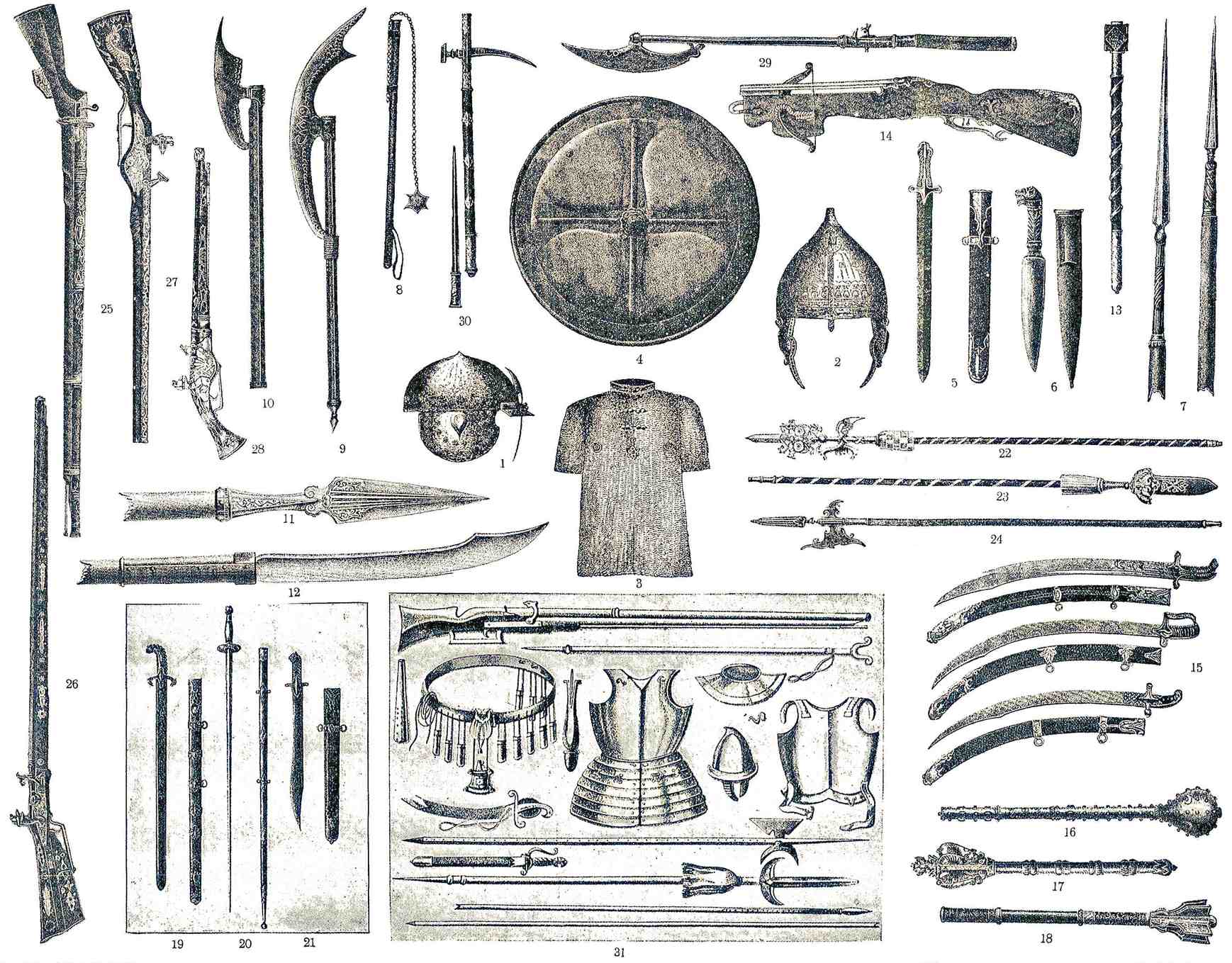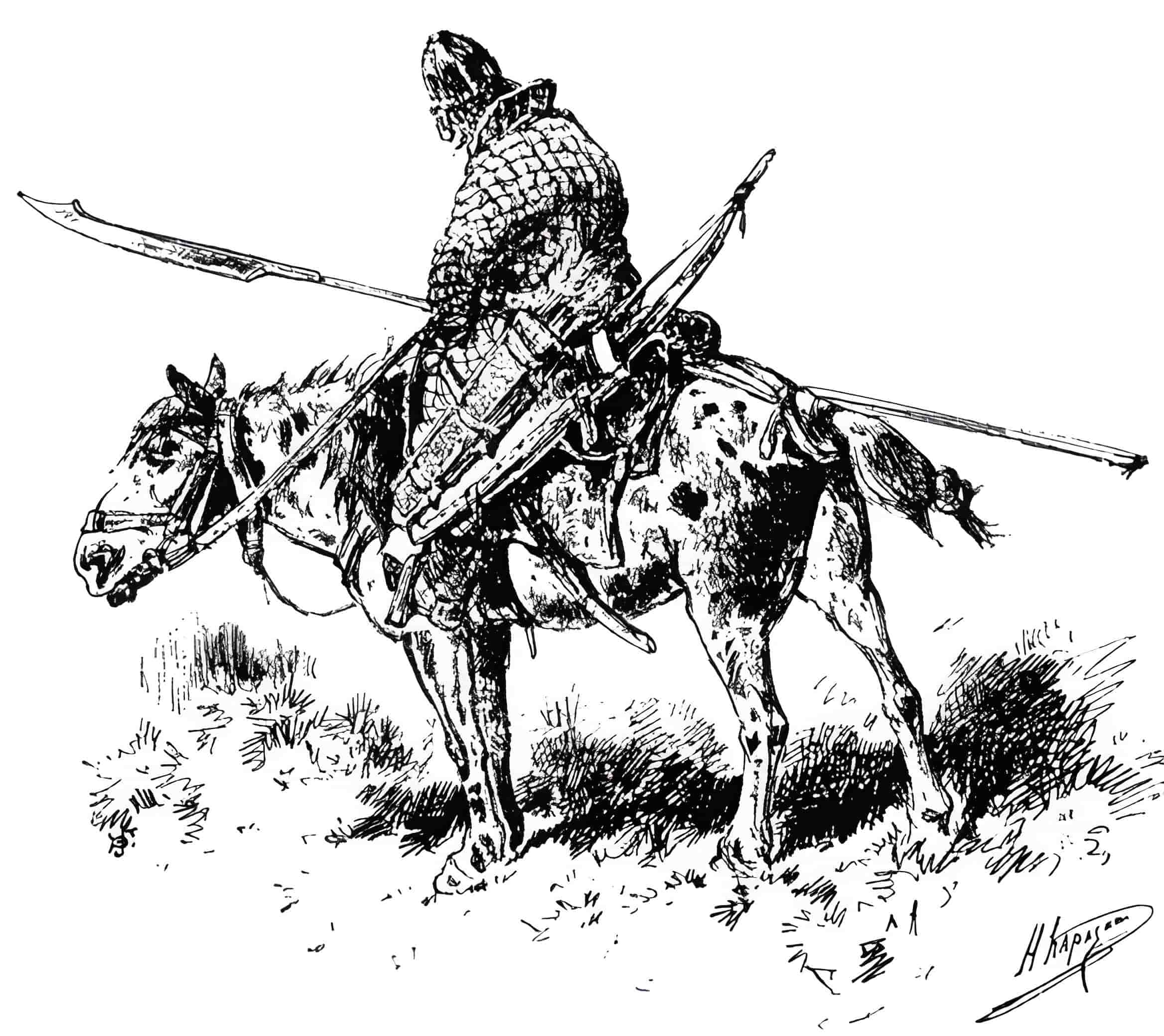The Cold Weapon at a Glance
What is a cold weapon?
A cold weapon is a type of hand weapon that doesn’t rely on fire, explosions, compressed gas, or electricity to operate. Instead, it works through direct muscular strength to produce its impact. Some examples include swords, daggers, polearms, hammers, crossbows, and bows.
What are the five categories of cold weapons?
Most of them fall into one of the five categories: polearms, bladed (edged) weapons, blunt weapons, throwing weapons, and defensive weapons.
What is the history of cold weapons?
They originated a long time ago as hunting tools. They were used to fashion blades, knives, shields, and maces during the Stone Age. They lost their significance with the development of firearms in the 16th century. Currently, they are used as auxiliary equipment, supplementing the capabilities of firearms, as an honorary (award) weapon, and as part of traditional attire.
What are some examples of cold weapons used for stabbing?
Examples of cold weapons used for stabbing include Koncerz, Spear, Dirk, Kris, Knife, Pike, Lance, Partisan, Rapier, Halberd, Sai, Sarissa, Stylet, Bayonet, Estoc, Spontoon.
A cold weapon is a hand weapon that works by using direct muscular strength to produce its impact without involving fire, explosions, compressed gas, or electricity. The cold weapons are separated as melee weapons and ranged weapons. The melee weapons function as an extension of the arm and the ranged weapon, in contrast, strikes targets at a distance longer than direct physical contact. Some of the cold weapons include swords, daggers, polearms, hammers, crossbows, catapults, and bows.
Categories of Cold Weapon

Most cold weapons fall into one of the five categories: polearms, bladed (edged) weapons, blunt weapons, throwing weapons, and defensive weapons.
- Polearms: including spears, pikes, lances, halberds, and military forks. The length of such weapons gives them a range advantage, and their sharp points are made for skewering.
- Bladed weapons: daggers, swords, knives, bayonets, machetes, and other edged weapons. These instruments of death are made for stabbing, mutilating, and bleeding out their victims.
- Blunt weapons: clubs, war hammers, maces, whips, and batons are all examples of blunt weapons. Blunt force trauma is the intended effect of these weapons.
- Throwing weapons: including bows, crossbows, blowguns, and catapults, and they are used for ranged attacks.
- Defensive weapons: shields (e.g., bucklers, heaters etc.), pepper spray, and body armor are considered defensive cold weapons.
History of Cold Weapons

The cold weapons originally appeared quite a long time ago as a hunting tool. Cold weapons such as blades, knives, shields, and maces were all fashioned in the Stone Age, either as basic tools or by severing a stick at one end and inserting a stone, which was then bound in place using strips of tree bark or a thread made of twisted catgut.
Cold weapons are also called white arms or white weapons. This name comes from the way the weapon looks when light is reflected off of it. The name dates back to antiquity, when it was used to highlight the improvement in stabbing efficiency from stone, copper, bronze, and iron blades to those made of steel, which looked white under the sunlight. (In the legal language, “cold weapon” is still more commonly used.)
Until the 16th century, cold weapons were the main type of weapon. With the development of firearms, they practically lost their significance.

Currently, they are used as auxiliary equipment, supplementing the capabilities of firearms, as an honorary (award) weapon, and as part of traditional attire.
In ancient times, the Roman weapon known as hasta (spear) was a pretty effective cold weapon. Worn by a person known as a hastati, it was approximately 5 feet and 9 inches (1.75 m) in length.
From the 15th century, it was called a pike. This very long weapon was similar to the ancient Greek weapon kontos, a weapon proper to horsemen or the ancient sarissa of the infantry of the Macedonian army.
Types of Cold Weapons
By Purpose
Hunting Weapons
- Hunting knife
- Dagger
- Hatchet
- Stiletto
- Spear
- Slingshot
- Machete
Sporting Weapons
- Sword
- Rapier
- Saber (Spadroon)
- Spear
- Small sword
Throwing Weapons
- Atlatl (spear thrower)
- Bolas
- Boomerang
- Harpoon
- Javelin
- Blowgun
- Bow and arrow
- Throwing knife
- Sling
- Slingshot
- Crossbow
- Shuriken
- Chakram
- Schnepper
By Inflicting Damage
By the nature of the inflicted damage (punctured, incised, slashed), the cold weapon distinguishes between crushing, thrusting, stabbing, and slashing weapons.
Stabbing
The blade of these cold weapons only results in puncture damage:
- Koncerz
- Spear
- Dirk
- Kris
- Knife
- Pike
- Lance
- Partisan
- Rapier
- Halberd
- Sai
- Sarissa
- Stylet
- Bayonet
- Estoc
- Spontoon
Slashing
- Battle axe
- Bardiche
- Bearded axe
- Shepherd’s axe
- Labrys
- Nata
- Tomahawk
- Kama
Cutting-Stabbing
- Halberd
- Bekbut
- Guisarme
- Glaive
- Guandao
- Dagger-axe
- Parrying dagger
- Katana
- Dagger
- War scythe
- Khopesh
- Kukri
- Machete
- Sword
- Naginata
- Basket-hilted sword
- Saber
- Scimitar
- Sovnya
- Fascine knife
- Trench knife
- Trident
- Falchion
- Shashka
- Spadroon
- Katar (dagger)
- Sword
- Yatagan
Crushing
- Bo (Jo)
- Bozdogan
- Mace
- Flail
- Horseman’s pick
- War hammer
- Club
- Pernach
- Nunchaku
- Tonfa
- Brass knuckles
- Telescopic baton
- Morning star
Operation of Cold Weapons
Blunt Weapons
Blunt weapons, often known as bludgeoning weapons, do harm by colliding with their target and doing so on the basis of impact theory. Typical examples of these cold weapons include cudgels, maces, clubs, hammers, and sticks. They are offensive weapons with a handle that is quite lengthy and intended to bash, dent, or damage through strikes.
The earliest forms of such cold weapons, which date back to the origins of mankind, are combat sticks and clubs. Stone Age weaponry progressed from clubs and maces to axes. The whips or flails came next, which were a punishment instrument formed of multiple chains with metal balls at their ends and strung from a short handle and used as a weapon of war. It was akin to the flagrum of the ancient Romans.
Bladed Weapons
Blades, on the other hand, are based on the application of the blade itself, which is a piece of metal with a proper form and one or more sharp sections known as “edge.” The blades that are known as slashing weapons are called “edged weapons” and common examples include swords, knives, sabers, and axes.
The bladed cold weapons can also be appropriate for hitting with the tip to pierce the target, which is called “pointed weapons.” They include weapons like bayonets, pikes, and spears or daggers. Some pointed weapons just have the pointed tip needed to pierce or puncture anything and they don’t even have an edge on their blades. The stilettos, foils, “centodieci,” and “Bec de Corbin” are a few examples.
Throwing Weapons
Bows and crossbows are examples of throwing cold weapons. They hurl different forms of projectiles, such as stones, arrows, and bolts, or they themselves are thrown such as javelins, throwing axes, throwing knives. They travel great distances using the physical force of the person in conjunction with the mechanism of the device. However, they are always loaded by the thrower’s muscle force.
Classification of Cold Weapon
Some people refer to cold weapons as those that don’t produce a sound. Others may characterize them as offensive tools that only use the fighter’s strength as a source of power. Or, you might say that they are any metal weapon that is not a firearm.
Based on Size
Short-hand weapons, long-hand weapons, and polearms are three categories of cold weapons based on size:
- Short-hand weapons: knives, daggers, stilettos, small daggers, and throwing hatchets are under the category of short-hand weapons, which are concealable and often do not measure more than 12 in (30 cm).
- Long-hand weapons: swords, sabers, katanas, war axes, etc., were the typical individual fighting weapons used at close range until the invention of guns.
- Polearms: They are poled weapons with handles that are 6.5 feet (2 m) or longer to extend the range of action of the actual weapons themselves.
Based on Function
Additionally, cold weapons can be split into several categories based on the reason they were constructed, such in:
- Throwing weapons, such as javelins and certain kinds of hatchets like the tomahawk.
- Crushing weapons, common examples of crushing weapons include clubs, hammers, maces, and sticks.
- Slashing weapons, swords, knives, sabers, and axes are examples of cutting cold weapons that are often used for cutting.
- Pointing weapons, such as daggers, spears, pikes, and bayonets, are designed to strike a target from the tip.
- Shooting weapons, like crossbows and bows are examples of ranged cold weapons that shoot battle objects (arrows, bolts, etc.) a long distance.
- Defensive weapons, such as armor and shields are examples of defensive cold weapons that deflect attacks from bladed weapons.
- Soft weapons, including chigiriki and chain whip, are folding or articulated weapons.
References
- Hafted Weapons in Medieval And Renaissance Europe: The Evolution of European Staff Weapons Between 1200 and 1650 – John Waldman – Google Books
- European Weapons and Armour: From the Renaissance to the Industrial Revolution – Ewart Oakeshott – Google Books
- How to Read European Armour – Metropolitan Museum of Art Series – The Wallace Collection Shop






